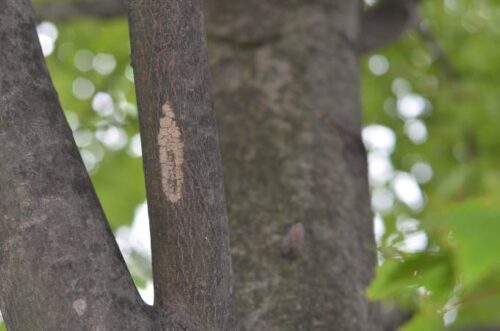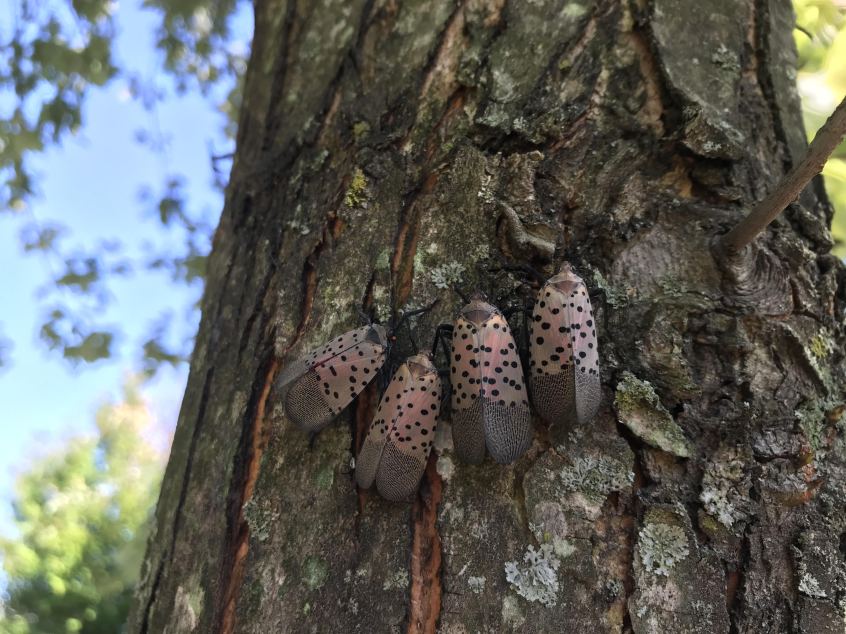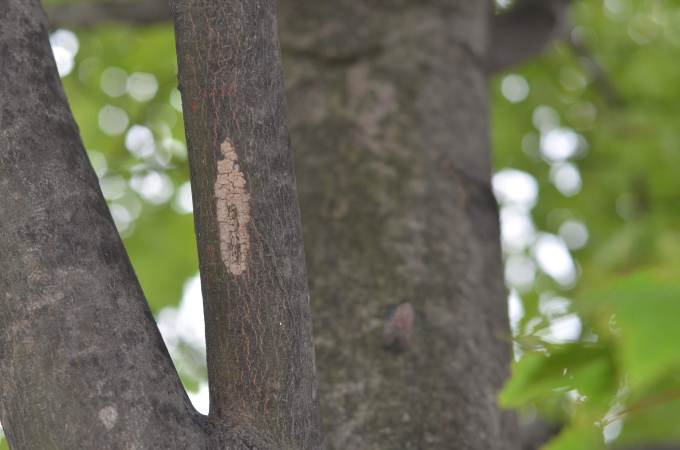Field Notes: (Hopefully Not) Spotting the Spotted Lanternfly
February 19, 2021 5:07 pm

By Katlin Dewitt, Forest Health Specialist
The spotted lanternfly is an invasive, sapsucking insect that was first detected in Winchester, Virginia in January 2018. As a pest of many different plants, it poses a threat to many of our native tree species, such as black walnut, maples, cherries, and many more. Additionally, this pest feeds on numerous commercially important plants like grapes, hops, apricots, plums, and apples.
As a sapsucker, the spotted lanternfly utilizes piercing-sucking mouthparts to feed on sap from woody parts of plants. It takes in an excess of sugary material, which then must be excreted from its hind end. This material is called honeydew and sounds (and feels) like a sticky rain falling from the trees above when spotted lanternfly populations are high! Honeydew can be messy and attracts other problematic pests, like ants and stinging wasps, and also allows for the growth of sooty mold.

One of the ways this pest has spread so far in a relatively short amount of time is through unintentional movement of egg masses on materials and goods. An adult female can lay up to two egg masses and each egg mass can contain 30-50 individual eggs! She will lay her egg masses on any flat or smooth surface protected from the elements; this may be on the underside of tree branches, underneath flaky bark, sides of picnic tables, scrap metal, or even children’s playsets! Egg masses are quite cryptic in coloration, blending in with many natural elements. Due to their camouflaged appearance and the female spotted lanternfly’s ability to lay eggs on many different surfaces, these egg masses can accidentally be moved by humans transporting firewood, camping trailers, or moving anything that has been sitting outside for an extended period of time.

In an effort to prevent the spread of the spotted lanternfly, the Virginia Department of Agriculture and Consumer Services (VDACS) has implemented a quarantine for Frederick County and the City of Winchester. In March 2021, this quarantine will expand to also include Clarke and Warren counties. Loggers who are working near these areas should perform self-inspections to make sure they aren’t spreading the spotted lanternfly to new areas.
The spotted lanternfly overwinters (survives the winter) in the egg stage. This makes February a good time to survey for this insect. The Virginia Department of Forestry’s forest health team, along with eight foresters located around the state, are conducting spotted lanternfly egg mass surveys at high-risk locations. These are sites that receive a lot of vehicle travel (e.g., rest areas, truck stops), areas where people bring outdoor goods and equipment (e.g., campgrounds, hiking trails), or where large amounts of goods are moved (near train tracks, big shopping areas). Since spotted lanternfly will lay eggs anywhere and everywhere, including high up in tree tops, binoculars are a great tool to utilize while doing these surveys. All site data is entered into a Survey123 app that will eventually be merged with VDACS survey data. Hopefully no new detections will be found during these surveys, but if an egg mass is found, early detection allows us to act quickly and remove any outlier populations.


Tags: Invasive Species, Spotted Lanternfly
Category: Forest Health
